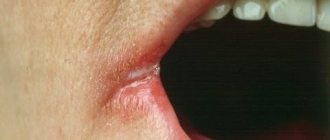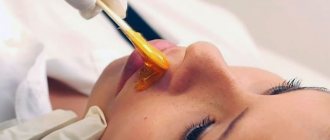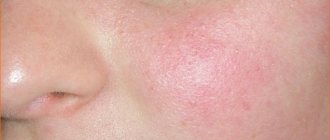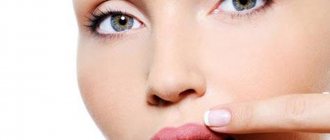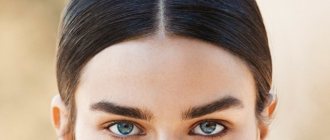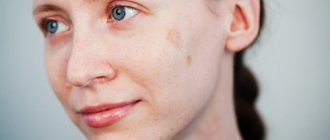The appearance of gray hair at age 20 or even earlier can cause anxiety and a desire to urgently do something about it. Sasha Mironova, who herself faced this problem, together with an expert trichologist, is figuring out what to do.
I first discovered my gray hair at the age of 21. I got scared, pulled it out with tweezers and went for a walk with my friend.
A year later I noticed that there were more white hairs. I painted them over with Tonic and went for a walk with my friend.
At 23, gray hair became very noticeable. Then I went to the forums, where girls aged 18–23 wrote about how their boyfriends left them because of their gray hair, and their girlfriends whispered behind their backs. Then I read articles about the causes of gray hair and how to effectively combat it. How to live with this was not written anywhere. All this horrified me. I painted myself with ammonia-free paint and didn’t go for a walk.
At 25, gray hair was already present on the forehead and temples. I no longer had any straight partings or bangs, and every month there was a two-thousand-dollar hole in my budget for coloring.
At 27, I decided not to cover my gray hair anymore. I found a hairdresser who selected a coloring that would allow you to beautifully grow out your gray hair color. Gray hair is a part of me, and I’m not at all ashamed of it. I'm fine.
Once I had come to terms with gray hair from an aesthetic standpoint, the health question remained: Is there anything I need to worry about? To find out, I saw a therapist and researched my genetics, and for this article I additionally consulted with an expert trichologist.
Olga Berezhnaya is a dermatocosmetologist and trichologist with 6 years of experience. She graduated from the Kuban State Medical University with a degree in General Medicine, completed an internship in the specialty of Dermatology and advanced training in the specialties of Trichology and Cosmetology.
Features of gray hair
The color of the hair depends on the type of pigment produced by melanocyte cells. Brown and black tints appear if the follicles are nourished by eumelanin. Red hair occurs in people with pheomelanin.
The normal age for the appearance of single gray hairs is considered to be after 30 years.
Natural causes leading to the loss of melanin are considered to be genetic predisposition and some pathological conditions: anemia, thyroid pathologies, gastritis, vitamin deficiency.
A trichologist will help determine the cause of early gray hair and develop a treatment plan. It should be remembered that the process cannot be reversed, we are only talking about slowing down the loss of pigment.
Light curls appear due to insufficient pigment content in the body. A decrease in melanin in the body causes the hair to turn white. In smokers, gray hair is partially diluted with a yellow tint.
The early appearance of gray hair is in most cases associated with genetics. If the change in pigmentation is not accompanied by baldness or deterioration in hair quality, then in addition to mesotherapy and plasma lifting it is worth undergoing glazing with a toning effect.
Cosmetologist, dermatovenerologist, laser therapist.
Nachoeva Irina Nasredinovna
7 years experience
Melanin not only gives hair its natural color. The degree of elasticity and strength of curls depends on its presence. Melanin also provides protection from the negative effects of ultraviolet radiation and other factors.
Loss of melanin leads to dry hair. Due to the lack of pigment, they become coarse, break easily and split at the ends. In rare cases, hair gets tangled together, making it difficult to care for.
Why does hair turn gray at an early age?
If for people after 35 the appearance of “ash” on the head is quite expected, then for younger people this is not a completely normal process. What can cause hair discoloration in young people, teenagers and even children?
- Various diseases.
- Genetic predisposition.
- Wrong lifestyle.
- Unhealthy eating.
- Increased psycho-emotional stress, neuroses.
- Frequent dieting.
- Bad habits.
All this leads to various disruptions in the body, which provokes such a reaction.
The mechanism of gray hair development
There is no age norm for the appearance of gray hair in women and men. Hair can change color both at 16 or 20 years old, and at 50. In this case, complete gray hair occurs around 60 years old.
Split ends
Split ends are a pathological condition manifested by the separation of dry ends, which outwardly become like a whisk, which indicates a violation of the hair structure.
The conditional norm is when single white hair appears after 30 years. At the same time, they remain invisible among non-pigmented ones. Gray hair first appears at the temples, after which it spreads to the rest of the head. It is believed that people with dark hair go gray earlier, but the process is slower for them.
There are three main ways in which white strands appear:
- age-related changes caused by aging of organs and tissues of the human body;
- premature gray hair that appears in youth;
- hereditary predisposition (leukotrichia), characterized by the fact that melanin does not enter the hair follicles.
The development of gray hair follows the same scenario, regardless of a person’s age. It appears due to the fact that hair loses the melanin pigment over time. The latter is synthesized in special cells that make up the epidermis. Next, the pigment penetrates the follicles and enters the hair.
Melanin synthesis occurs under the influence of hormones produced by:
- organs of the reproductive system;
- pituitary gland;
- thyroid gland;
- sympathetic division of the nervous system.
The appearance of gray hair in almost all people is due to a physiological factor. As we age, the cells responsible for melanin synthesis become old and stop performing their functions. Hair acquires a silvery-white color due to the fact that its structure becomes porous due to loss of pigment.
Age phenomenon
Gray hair can be divided into 2 types: early (before 35 years) and age (after 35). The appearance of white hairs at the age of 40 is a natural phenomenon associated with a decrease in the production of pigment substances and deterioration in nutrition of the scalp. The answer to the question: “Why does hair turn gray?” is simple. And without lengthy introductions, it is clear that after 40 this is an age-related phenomenon. In this case, you can only adjust the color with food and various masks. A well-designed diet will slow down the process of hair lightening. But over time they will still become ashen.
Causes of early gray hair
The appearance of early gray hair is often due to genetic predisposition. Also, the phenomenon under consideration develops under the influence of a number of diseases:
- dysfunction of the thyroid gland due to autoimmune pathologies or hypothyroidism;
- Iron-deficiency anemia;
- atherosclerosis;
- vitiligo;
- herpes zoster (local graying or poliosis is formed);
- gastritis, characterized by low stomach acidity;
- syndrome .
Among the reasons contributing to the occurrence of the phenomenon under consideration are stressful situations. They provoke excessive production of adrenaline, which disrupts the connection formed between hair proteins and melanin. Exposure to stress leads to gradual leaching of pigment.
Why can our articles be trusted?
We make health information clear, accessible and relevant.
- All articles are checked by practicing doctors.
- We take scientific literature and the latest research as a basis.
- We publish detailed articles that answer all questions.
Nervous stress cannot lead to immediate graying. This popular belief is refuted by medical statistics. Stress can cause massive hair loss, making gray hair more visible.
Vasospasm caused by pathology or nervous strain is another cause of hair graying. Under the influence of this factor, the nutrition of the follicles is disrupted, as a result of which the cells that produce melanin die.
In addition, early gray hair appears due to:
- taking certain medications ;
- exposure to x-rays , which causes local graying;
- chemotherapy;
- lack of vitamins and minerals (zinc, copper, iron and others);
- insufficient intake of protein into the body;
- frequent and prolonged exposure to ultraviolet radiation;
- addiction .
Chemical hair treatments and bleaching speed up the pigmentation process. They also turn white with frequent contact with personal hygiene products.
Poor nutrition
If the diet lacks vitamins and microelements, the outer skin is always the first to react. The body begins to save a little. This is why hair turns gray. 30 years is no longer the age when the body is able to endure various hardships without consequences. For example, with a lack of vitamins, hair becomes brittle, it begins to lose its shine, silkiness and color. Therefore, it is important to maintain a balanced diet and eat fresh fruits and vegetables every day. Don't forget about proteins.
What to do with gray hair
The problem in question mainly worries female representatives, since this phenomenon changes the appearance and is associated with aging for many, so many girls seek to remove white hair.
However, there is no point in such actions. First of all, the problem is not the hair. In place of the torn one, a new one of the same color will grow.
Secondly, such actions damage the follicles and contribute to the development of dermatitis. It is possible to remove gray hair or slow down the process of its formation only after establishing the true cause of its appearance.
Dry seborrhea
Dry seborrhea is not an extremely common disease, but it can appear at any time in a person.
A trichologist helps you choose a treatment strategy for the problem. To identify the cause of gray hair, you may need the help of an endocrinologist, gastroenterologist and therapist. The problem is investigated through:
- spectral analysis of white curls for the level of microelements in them;
- assessing the level of vitamins in the blood;
- analysis of hormones produced by the thyroid gland and other methods.
Only based on the data obtained during the examination of the patient, it is possible to find out how to deal with early gray hair.
Lifestyle
If a person is as healthy as an ox and the reason does not lie in any diseases, then it is possible that he is abusing his good condition. Does not follow a daily routine, eats on the go and snacks on fast food, does not sleep for days. Young people also have frequent parties in clubs, drinks and cigarettes, and then sleepless nights before a session or defense of a course or dissertation. This attitude towards one’s own health leads to various unpleasant consequences. As a result, young people begin to notice that their complexion has changed, their nails have begun to peel, and their hair has lost its shine. Girls are especially susceptible to such changes, and they are more likely than guys to wonder why their hair turns gray at 25. In this case, it is necessary to urgently change their lifestyle. It is possible that the process will stop and hair coloring will have to be postponed.
Diets
This is a special case of malnutrition. Many have had to deal with hair loss while following diets of varying degrees of severity. This is caused by the fact that the body lacks vitamins and microelements. Diet regimens that exclude protein have become very popular. Hair may not fall out, but tyrosine stops entering the body and melanin production decreases, which leads to early whiteness of the head. Complete fasting also has its pitfalls, in particular, it can lead to exhaustion of the body, and this will provoke hair loss and graying. Girls who want to lose weight are at great risk.
No hats
Such a fashionable trend among girls now - walking with uncovered hair at any time of the year - can lead to sad consequences. This is one of the leading reasons why hair turns gray. Under the influence of sunlight, pigment substances are destroyed. Many people have probably noticed that over the summer their hair becomes lighter and fades. With prolonged and regular exposure to ultraviolet radiation, the beautiful color will remain only memories and that very gray hair that everyone wants to get rid of.
Lack of a hat in winter is also very harmful to hair. Winter in most of Russia is much colder than in Europe. Regular exposure to low temperatures can lead to hair breakage and frequent headaches. This is also one of the factors explaining why hair turns grey. Cold causes blood vessels to constrict, which impairs blood circulation in the scalp. As a result, the activity of the follicles is disrupted, which leads to the appearance of white hairs.
